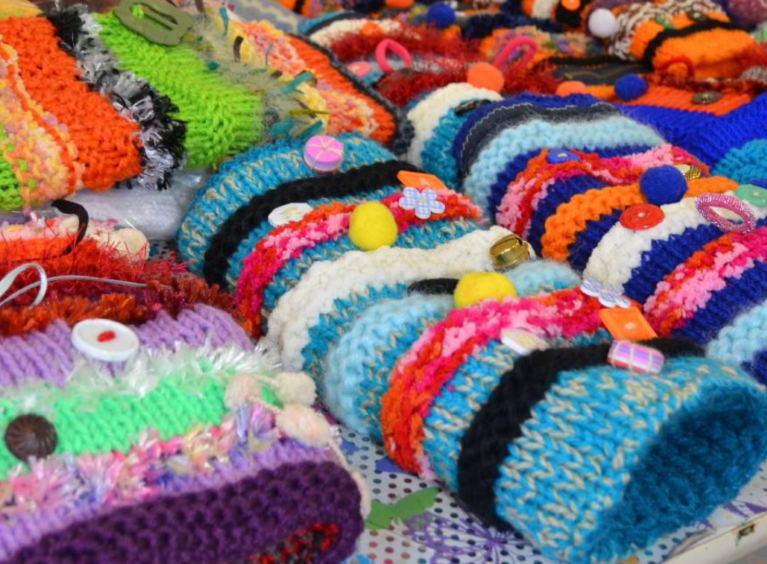Appeal to Rotherham's knitters as supplies of Twiddlemuffs start to dwindle
The Rotherham NHS Foundation Trust is appealing to local knitters, craft and community groups to support hospital patients living with dementia.

For a number of years, hospital colleagues have been giving out knitted twiddlemuffs for patients experiencing delirium or living with dementia. These simple knitted items help to provide a harmless distraction for patients in our care.
Each twiddlemuff is a brightly coloured simple knitted tube which can be worn over the hands, adorned with bows, buttons, beads, bells, and other items which the wearer can ‘twiddle’.
But now supplies are waning, as Cindy Storer, Deputy Chief Nurse at The Rotherham NHS Foundation Trust explains: “Staying in hospital can be challenging regardless of a person’s age. It can also be a significant source of anxiety for patients who are separated from their familiar environment and loved ones.
"Twiddlemuffs offer a simple yet effective solution, especially for people experiencing delirium or who are living with dementia, who may struggle to understand why they’re staying in hospital. These bands not only provide sensory and cognitive stimulation but also serve as valuable conversation starters. They contribute to enhancing safety on hospital wards by keeping patients engaged and distracted, particularly if they need a medical device like a drip or cannula.
“We’ve been using twiddlemuffs for a number of years, but we’ve seen a drop off in donations. We can only use one twiddlemuff for one person to help keep the risk of infection down, so are always keen to receive a fresh supply so we always have one for a patient who may benefit - and also let them choose which one they'd like.
“We’d be so grateful to anyone who has a bit of spare time, spare wool and a few bits and bobs in their sewing box who can help us with this request, or share with those they know who can help.”
There’s no right or wrong way to design a twiddlemuff – some people go all out on the decorations, while others add texture or make the colours as bright as they can. The most important thing is that the adornments – beads, bows, zips or other items – are not easy to swallow, and are firmly sewn on and not easily breakable.
In-person drop offs of donations can be made to the Welcome Desk in Rotherham Hospital’s main entrance.
Donations can also be made by post to:
Kim Moore
Senior Library Assistant
Library, Level D
Rotherham Hospital
Moorgate Road
Rotherham
S60 2UD
See below, our handy FREE twiddlemuff pattern.
Twiddlemuff Sensory Band knitting pattern
A sensory band is a knitted muff that has attachments stitched onto it. These attachments are sewn both inside and out, for patients to twiddle with.
Sensory Bands work best when using up leftover wool in a variety of colours and textures!
What you'll need:
- 6.5mm straight needles (UK size 3) or 8mm circular needles (UK size 0)
- Large buttons that can’t be swallowed
- Zips or strong ribbon that can be played with but not breakable
- Wool / yarn
Directions:
Step 1: Making the band
- Cast on 40 stitches using 2 strands of double knitting wool (or one strand of chunky wool)
- Work in stocking stitch (knit one row, purl one row for 11 inches (28cm)
Step 2: Continue with the body
- Continue with stocking stitch using various textures and colours of wool
- Knit until work measures 23 inches (58cm)
- Cast off
Step 3: Decorate and finish!
- Attach zips, loops, pom poms, buttons and anything else that patients can fiddle with to the KNIT SIDE mainly on the band.
- Neatly join sides together with purl side facing you
- Turn inside out
- Push the band inside the body
- Neatly sew together the 2 ends
